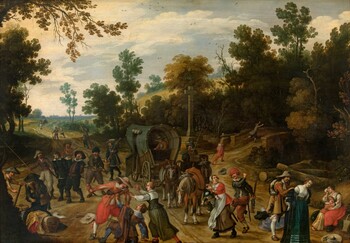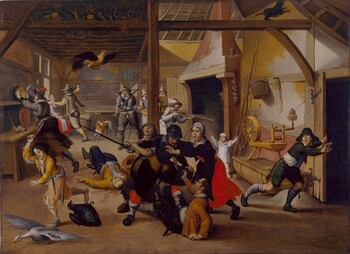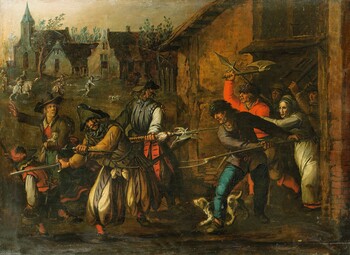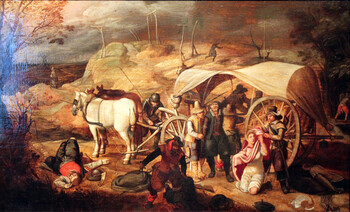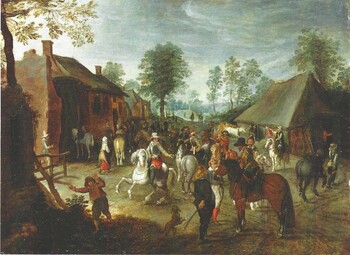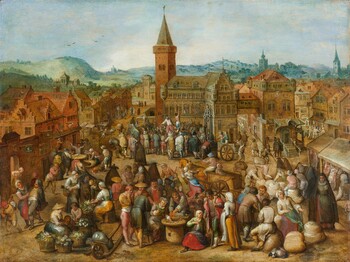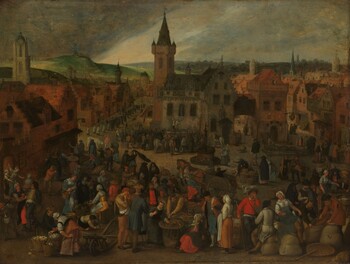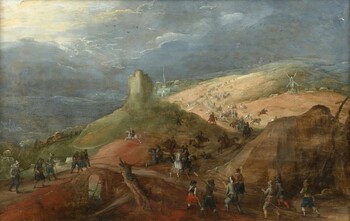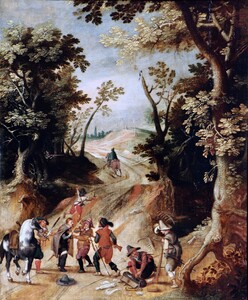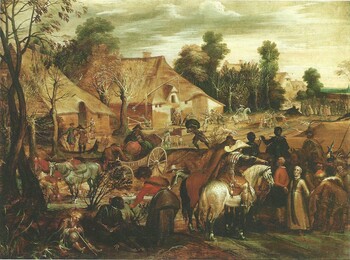7.300 €
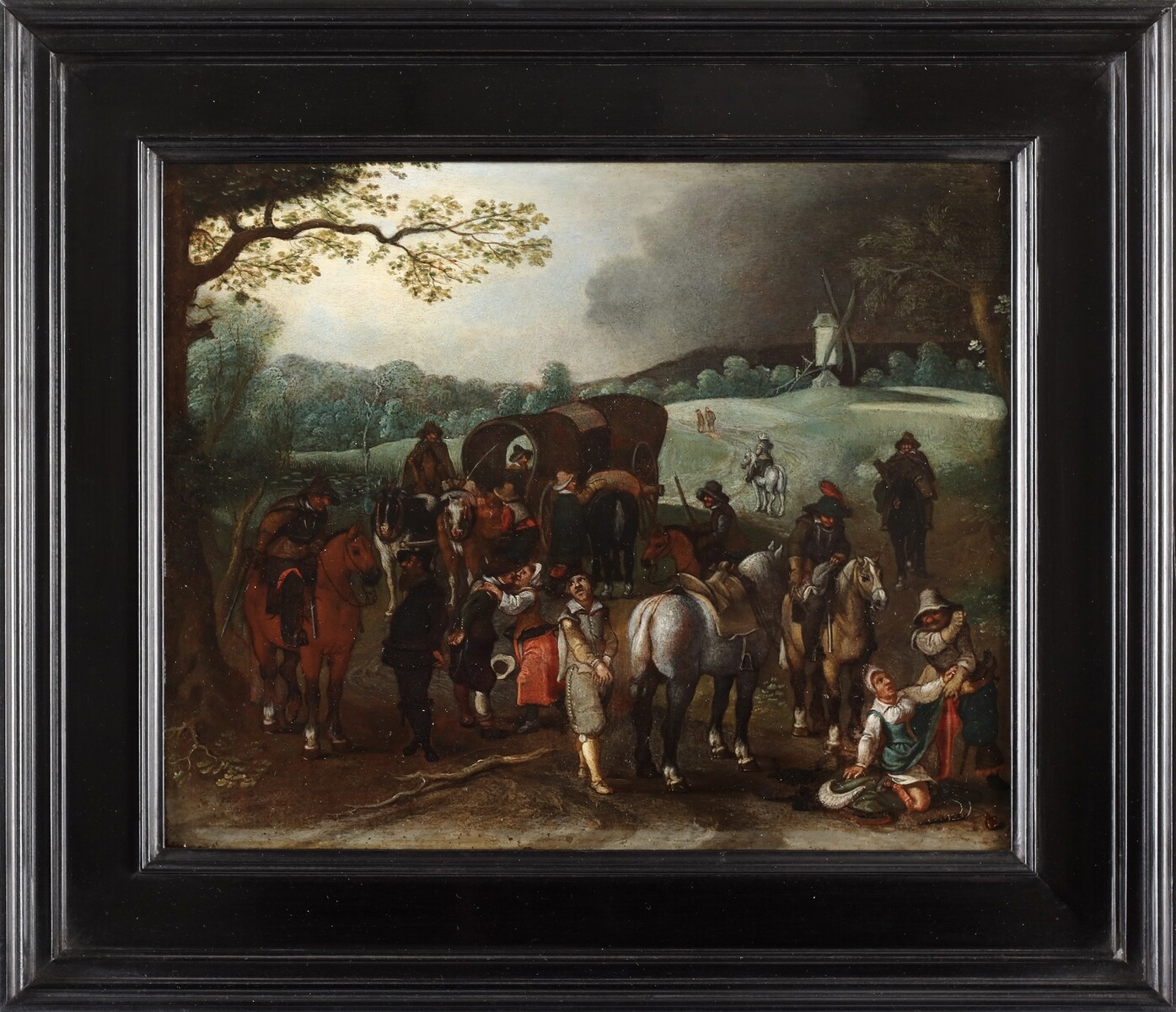
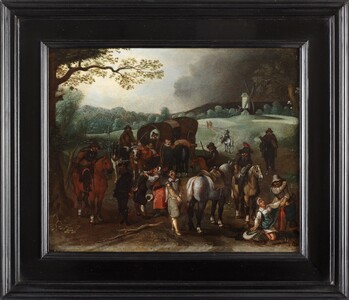
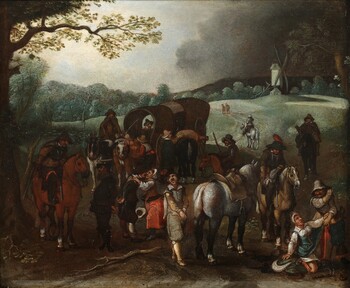
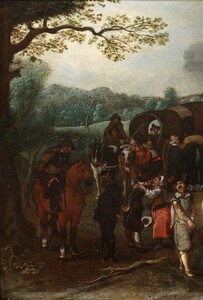
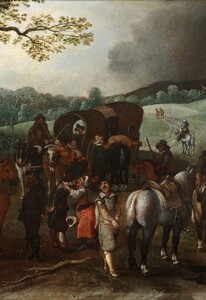
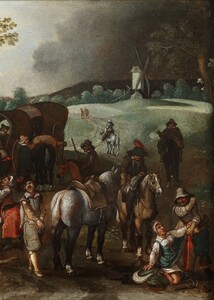
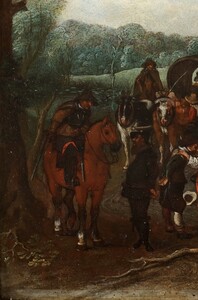
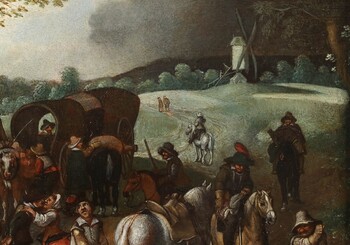
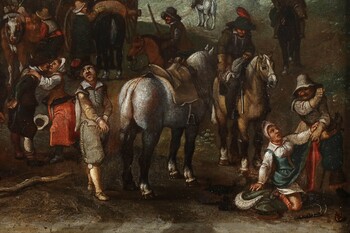
Our painting depicts the attack on a Flemish traveling carriage pulled by two horses.
Joost Vander Auwera dates our painting circa 1608, so at the end of the first half of the Eighty Years' War.
The Eighty Years' War started as a battle between mainly Dutch Protestants against the Spanish Habsburg, Catholic occupiers. Ultimately, the battle would become a full-blown war of independence by the later Dutch Republic from Spain.
Spread over 80 years there were few battles, and mainly sieges of enemy cities.
From 1609, so about a year after our painting, the Twelve Years' Truce began.
The second half of the war started in 1621: initially there were Spanish successes (including the Fall of Breda), but after a few years the situation completely reversed, the Dutch had the initiative and they were ultimately able to force the Spaniards to accept the Peace van Munster in 1648 and the final recognition of an independent Dutch Republic.
Our painting dates from the first half of the Eighty Years’ War, from shortly before the Twelve Years’ Truce. The situation had been particularly chaotic during those years and many foreign mercenaries were used on both sides. This led to particularly problematic situations in the war zones. On the one hand, there was no fighting during the winter months, so these mercenaries had no income. And on the other hand, the wages of these mercenaries were often not paid on time during the rest of the year. Mercenaries, whether deserters or not, and ordinary highwaymen, regularly attacked easy targets: villages, farms and unsuspecting travelers.
Here we see a group of these freebooters robbing two couples of wealthy Flemish travelers. One of these horsemen, front right, has a striking orange feather on his hat, which locates the robbers in the Dutch camp.
The travelers' belongings are stolen, for example from the woman in the front right. A rider next to the wagon is already loading a travel bag onto his horse.
The two Flemish men, already depicted here with their hands tied, will be kidnapped; they will only be released in exchange for a ransom.
One wife kisses her husband goodbye, the second, at the front right, has a harder time, because she does not want to take off her precious clothes.
Typical for Sebastiaen Vrancx is the apparent lack of compositional unity between the different groups of figures: the composition seems like a puzzle of autonomous groups, while in fact it is not; it is clearly about one action, one story.

